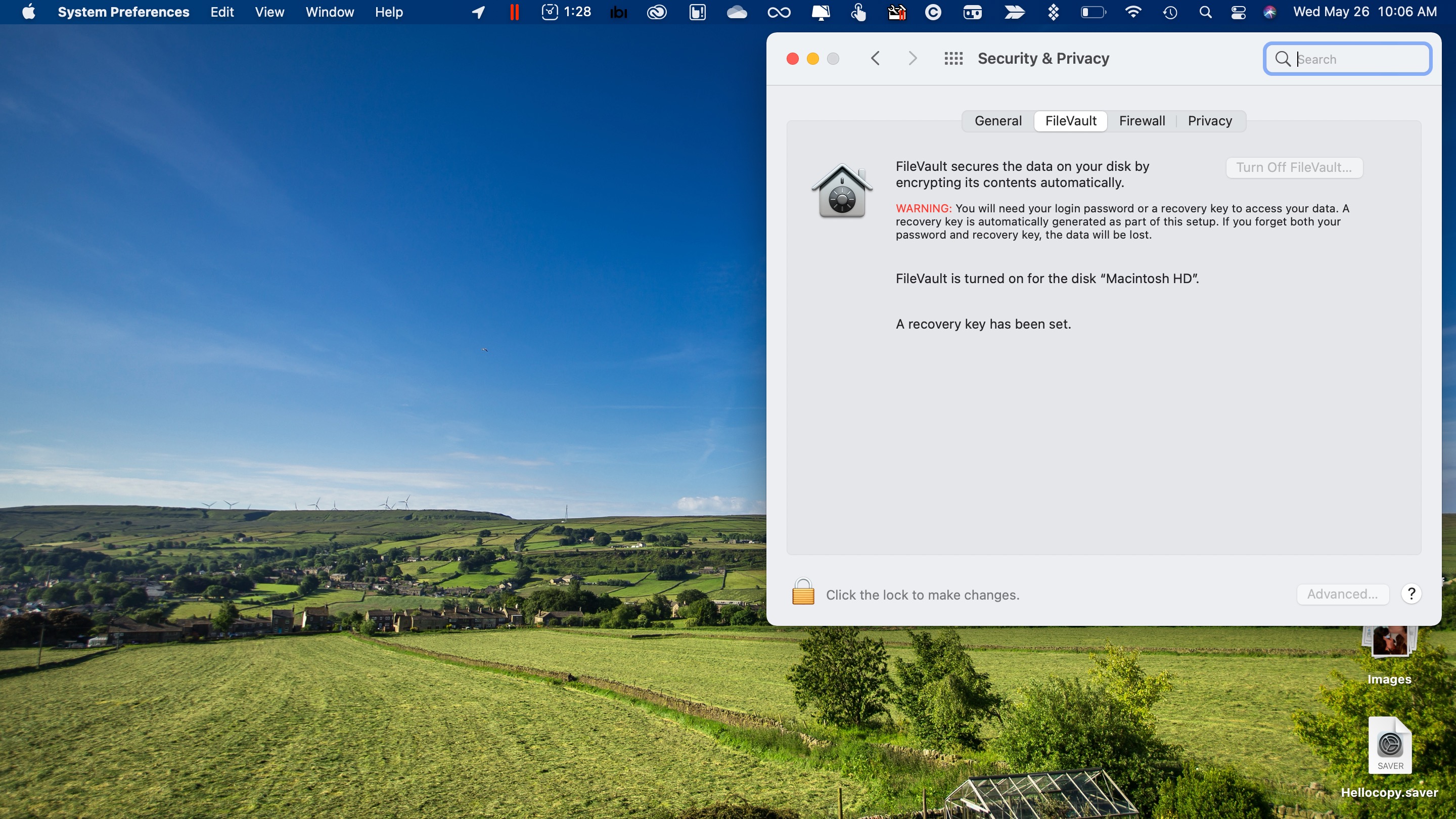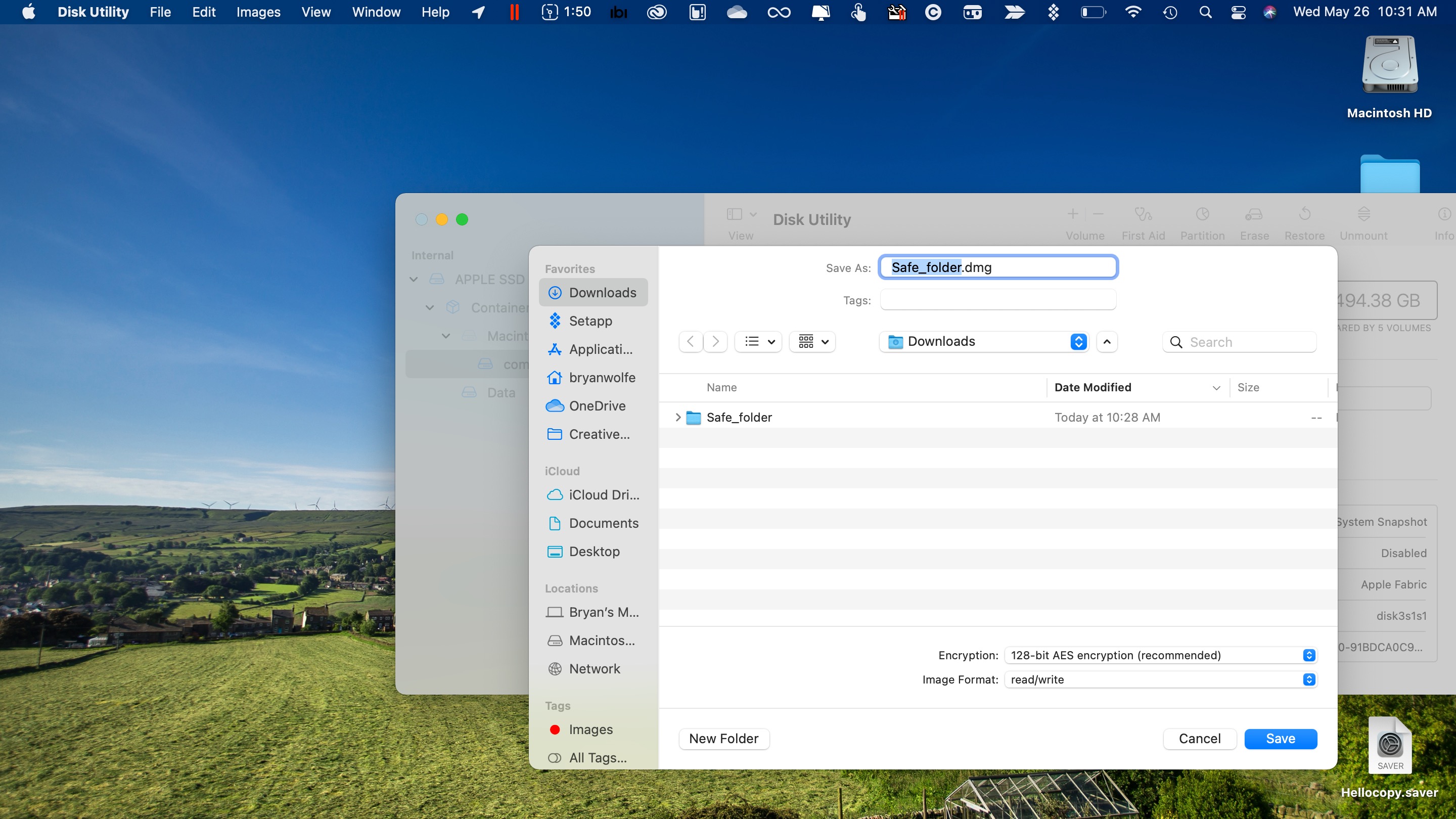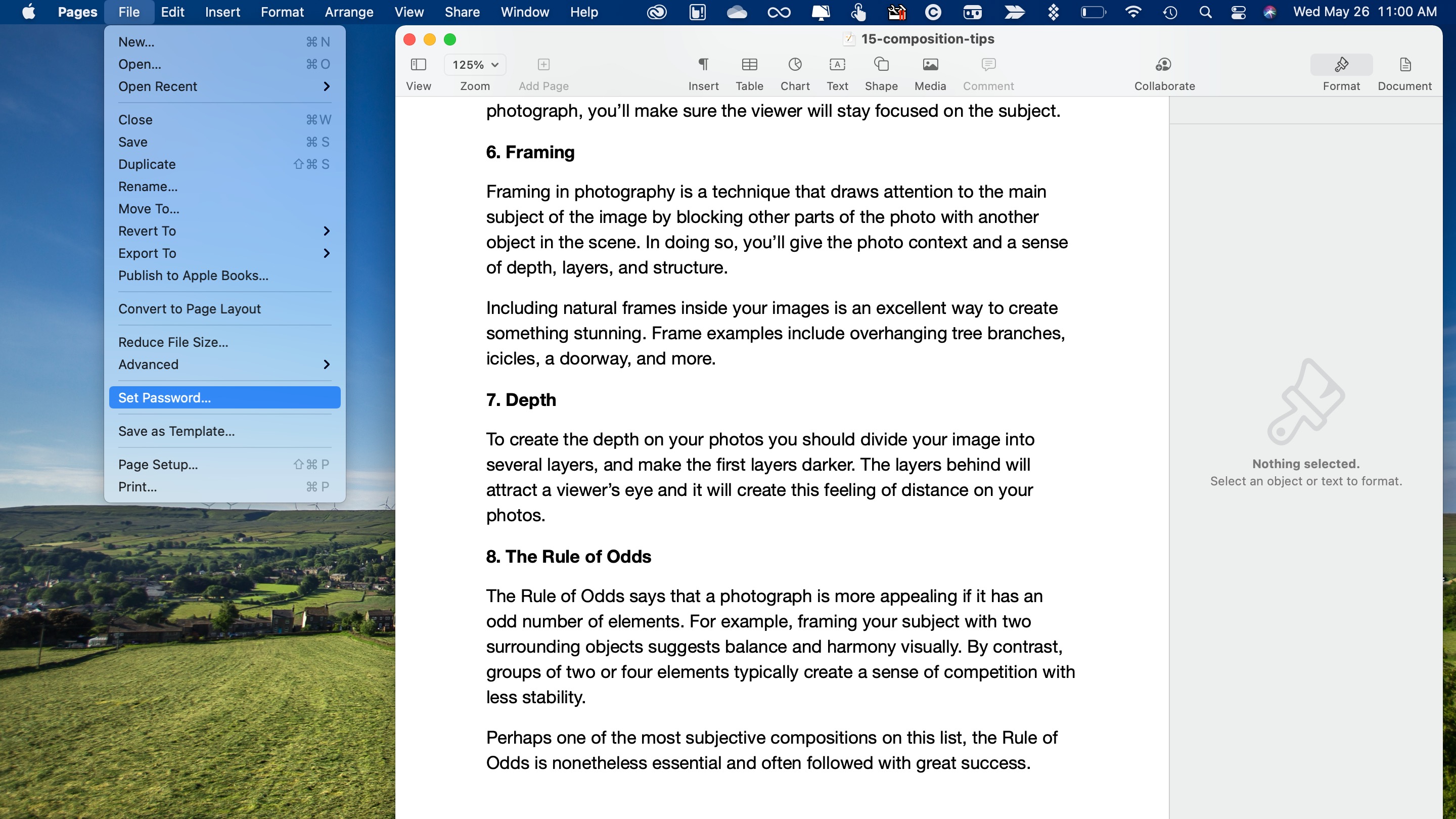How to Upload Folders to Onedrive From Mac
How to encrypt files and folders on your Mac
Protect your nigh important data

(Epitome: © Future)
Apple has several different encryption tools built into macOS, letting you lot encrypt your unabridged Mac or individual files or folders, and in this guide nosotros'll bear witness you how.
With encryption, your data gets scrambled and at that place's no way to read it without gaining admission to a clandestine central, password, or, portable RFID scrap.

FileVault
When setting up a Mac, Apple asks whether to use 'FileVault' to protect the entire device through encryption. Once enabled, 'FileVault' works in the background to secure all of your files on the wing. 'FileVault' is the easiest style to add encryption onto your Mac and is the most far-reaching since it covers everything.
When enabling 'FileVault', you lot're prompted for a password, which you lot must use each time your Mac is rebooted or waked from slumber. You'll also demand to establish a nix. On Bone X Yosemite or after, this can be your iCloud account, which makes unlocking your reckoner very like shooting fish in a barrel.
If yous rather non use iCloud FileVault recovery, y'all tin can create a local recovery key. The method is a tad more secure since the primal is typically stored offline instead of on iCloud servers. Still, almost will cull iCloud since it provides for the most seemless process.
Regardless, without your password and iCloud business relationship/recovery key, you won't be able to open your Mac, and your data will remain locked.
If you decide not to actuate 'FileVault' during Mac setup, you can do so at any time by following a few steps. Get into the 'System Preferences' on your Mac, so choose 'Security & Privacy'. Click on the 'FileVault' tab, then select 'Plow on FileVault' and following the additional instructions.
You can turn off 'FileVault' from the aforementioned screen. In this case, be certain to choose the lock at the bottom left to unlock, then click 'Turn off FileVault'.
The biggest drawback to using 'FileVault' is its use of system resources, although that'south less of a problem on newer Macs with more bandwidth than older devices. There'south as well the take chances cistron; if you lose your recovery code or can't log into your iCloud account, access to your calculator files could be lost forever.

Encrypt folders
If encrypting your entire computer seems unnecessary for your situation, you lot can encrypt private folders on your reckoner. This provides a bang-up solution when sharing folders. Before getting started, brand sure to add all of the relevant files into the binder you lot wish to encrypt.
To encrypt the data, go to the Finder > Applications > Utilities folder. Choose 'Deejay Utility'. On the top of the bill of fare, select File > New Paradigm > Image from Folder. Choose the folder you wish to add a countersign to, and then click 'Choose'.
On the adjacent screen, choose your level of encryption (128-scrap or 256-chip AES Encryption) and your password. Click 'Choose'. Next, next to 'Image Format', choice 'Read/Write'. Select 'Save' to exit the window.
Once the organisation finishes encrypting the folder, click 'Done'. Leave 'Deejay Utility'.
Your newly created .dmg file is secure. Yous can share the .dmg file just as you would any other file. Double-click at any fourth dimension to open it; y'all'll need to blazon in the countersign to complete the process.

Encrypt files
You can besides encrypt individual files through macOS. This is only possible through certain native Apple tree apps such as 'Notes', 'Keynote', and 'Numbers'.
To lock a 'Notes' file, open the 'Notes' app and create a new file. Next, right-click on the note and select 'Lock Note'. Add a password to protect the file.
For other apps, bring upwardly a certificate in the supported app, then choose File > Set Password, and add a countersign to protect the file.
- Best MacBook and Macs: top Apple desktops and laptops
- Become an extra layer of security with a Mac VPN
alngindabubabsizarly.blogspot.com
Source: https://www.techradar.com/how-to/how-to-encrypt-files-and-folders-on-your-mac
